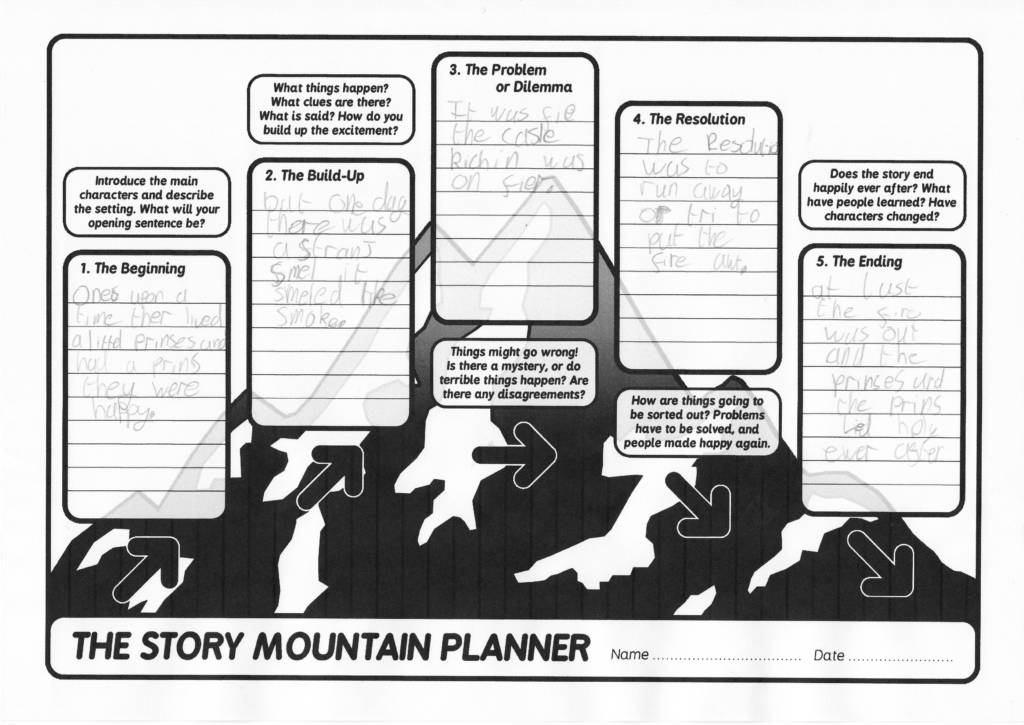“Storytelling is about connecting to other people and helping people to see what you see.” – Michael Margolis
Anyone who knows me will know that a lot of my creative inspiration comes from my children. My daughter, Jocelyn, gave me so much material for my book that I owe her a debt of gratitude she will only really understand as she grows older.
One evening after school, Jocelyn brought home a story that she had written at school that day. What she wrote was delightful in both its brevity and simplicity. I was immediately captivated by how a six-year old could create something so engaging, so I asked, “How did you write that story so well?” She responded with “using a Story Mountain, Daddy!”
A “Story Mountain” is a simple aid used in the classroom to inspire children into writing and telling a meaningful story using a five-part structure. Jocelyn’s story mountains looked like this:

To explain the structure (and to decipher some of Jocelyn’s more literal spellings) the story reads as follows:
Simple but satisfying. We can follow a story like this and it keeps our attention until the very end.
So how is this storytelling technique useful to a Scrum team?
Here are three simple applications:
The Daily Scrum – increase engagement by describing what happened yesterday in this format. Though harder, it is still possible to try and predict the upcoming story for today too.
The Sprint Retrospective – tell the story of the sprint in this format, either as individuals or as a larger team. Dive deeper into each part thereafter.
Sprint Goals – ask the Product Owner to define the highest priority business problem using parts 1-3 of this structure. Reading this out at the start of a planning session will galvanise the team around a common purpose. Then encourage the scrum development team to find a solution to the problem and summarise their approach as parts 4 and 5 of the same story structure. Write down the completed story mountain at the top of the sprint backlog to remind the team of their purpose and focus during their upcoming sprint.
Storytelling is a medium for increasing engagement and purpose within a Scrum team. We all love being told a story. It’s the reason we turn the pages of a novel, or sit and watch a movie for two hours straight.
Why don’t you have a go at telling a story with your Scrum team?
“We as a species are addicted to story. Even when the body goes to sleep, the mind stays up all night, telling itself stories.” – Quote from The Storytelling Animal: How Stories Make Us Human by Jonathan Gottschall
You can read more about how storytelling can be useful to agile teams in my book, Improv-ing Agile Teams: Using Constraints to Unlock Creativity.
